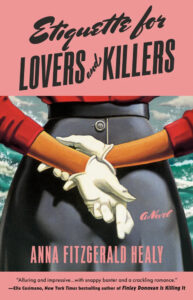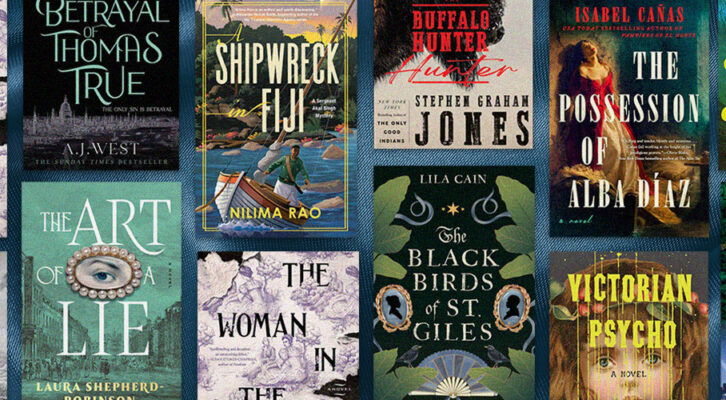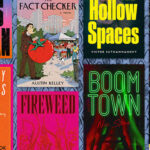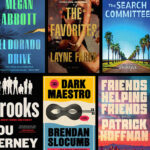Word puzzles are all around us. Evian is naïve spelled backwards (which fits, seeing as anyone paying a surcharge for fancy French water must be a little wet behind the ears) and Erewhon is an anagram for nowhere (also apropos, because the overpriced grocery store is a black hole for my bank account). Linguistic games are rampant throughout popular culture. Shutter Island is an anagram for Truths and Lies, the Doors’ song “Mr. Mojo Risin’” is an anagram for the lead singer’s name, and “redrum” had its shining moment in Kubrick’s classic horror film. Uncovering these quirks gives us all a chance to connect the dots and get that tiny endorphin-rush of discovery.
The armchair detective is a byproduct of the “cozy-mystery” genre, with readers slowly going cross-eyed, trying to solve a mystery by identifying a linguistic pattern hidden within the book. Wordplay is a defining quirk of the genre, allowing readers to wear the detective cap and become an active player on a fictional chessboard. At its heart, the mystery novel is an intellectual game of reasoning between reader and author. Solving linguistic cues allows readers to take an active role in the drama and play along.
The Merriam-Webster Dictionary has 91 synonyms for murder: neutralize, assassinate, smite, butcher, zap … the list goes on. They say to write what you know, and although I don’t know much about “zapping” someone to death, I know quite a bit about palindromes, ambigrams, antigrams, portmanteaus, and untranslatable words. One day, I decided to create my own literary puzzle with my debut novel, Etiquette for Lovers and Killers. Here are a few of the partners in crime who helped me along the way.
Modern Mysteries:
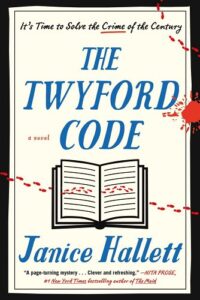
The Twyford Code, Janice Hallett, 2022
12 out of 10 stars for linguistic insanity.
In an acrostic sentence, the first letter of each word forms a secret message, pocketed within a larger whole, with a specific word or phrase notifying the reader of the embedded code. Acrostic messages take center stage in Janice Hallett’s novel The Twyford Code. Verbal cues, misinterpretations, and slang are also used as tools in Hallett’s formally inventive mystery within a mystery. I read The Twyford Code with an expression of shock: mouth open, eyes narrowed, cup of tea spilling across my lap.
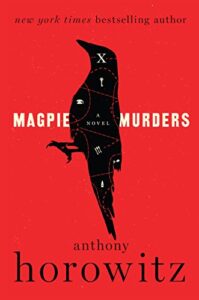
Magpie Murders, Anthony Horowitz, 2016
10 out of 10 stars for dirty words in disguise.
Oh golly’s prevail in this fiendishly clever mise en abyme, in which a smaller version of a work is hidden within a larger composition. In this linguistic powerhouse, Horowitz astounds with feats of deduction, misdirection, and aging male vanity. Clandestine wordplay and intertextual puzzles act as a unifying element within the novel’s divergent structure, helping readers stay engaged in the investigation, while the story transforms before their eyes. Magpie Murders is solved by playing around with words and discovering a crude anagram in the center. I have a bit of a crush on this novel and the playfully twisted mind that wrote it.
Golden-Age Crime Fiction:
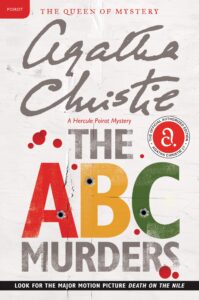
The ABC Murders, Agatha Christie, 1936
20 out of 10 stars for mustaches that defined a genre.
“‘Words, mademoiselle, are only the outer clothing of ideas,’” states Hercule Poirot, Christie’s iconic detective who captivates readers with his deductive reasoning and inspired facial hair. In The A. B. C. Murders, a serial killer teases Poirot with an alphabetical murder spree. In this classic mystery, Christie uses readers’ natural curiosity and desire for worldplay against them, hiding the killer’s identity and motivations within a grandiose alphabetical scheme. Using word puzzles as a plot device, Christie invites readers to engage in a deeper linguistic analysis of the story and climb down the lexical rabbit hole.
Classic Stories:
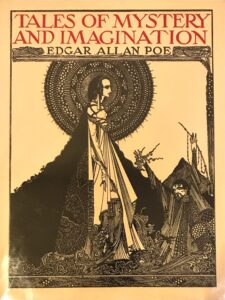
Tales of Mystery and Imagination, Edgar Allan Poe, 1919
100 out of 10 stars for palpitating prose.
Edgar Allan Poe shaped the twisted black heart of contemporary dark fiction. Credited with laying the groundwork for the modern detective story, Poe also developed the structure of contemporary gothic horror. In The Tell-Tale Heart, he elegantly marries both genres while exploring a meticulously planned murder. The Tell-Tale Heart struck a chord with readers and continues to thrill and chill over a century later. Poe’s story begs the question: What kind of sound could drive someone mad? Wordplay takes center stage in this auditory mystery, where Poe uses onomatopoeiae and figurative language to cue readers into the narrator’s disturbed state of mind and draw them into the heart of the mystery
Japanese Fiction:
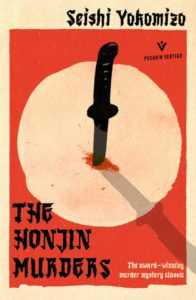
The Honjin Murders, Seishi Yokomizo, 1946
11 out of 10 stars for cute cat cameos in murder scenes.
This Golden-Age Japanese mystery reminded me of Twin Peaks, with a mysterious three-fingered man, the perfect couple of newlyweds, and the perfect crime: a locked room that literally no one could have entered. Set in 1930s small-town Japan, this classic locked-room mystery features the Japanese version of Columbo. Intimate and highly stylized, The Honjin Murders offers a unique glimpse into traditional Shōwa-era Japan, before World War II rocked Japanese culture to its core. Language plays a pivotal role in Yokomizo’s heady whodunit, with the key hinging upon untranslatable Japanese terms. Poetic idioms are crucial for understanding the cultural context of this mystery, and contain clues for solving the case.
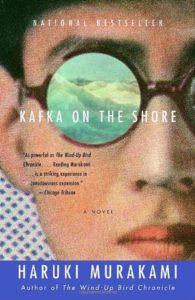
Kafka on the Shore, Haruki Murakami, 2002
5 out of 5 stars for finding the poetry in Kentucky Fried Chicken
According to Murakami, this novel “contains several riddles, but there aren’t any solutions provided.” In Kafka on the Shore, the author dares readers to decipher the riddles for themselves. A dreamlike meditation on identity, heredity, and cultural taboos, Kafka on the Shore follows a savage killing, where the identities of both victim and killer are a riddle. This contemporary Japanese classic is a linguistic puzzle as poetic as it is engaging. Although Kafka on the Shore isn’t a traditional mystery, the linguistic puzzles that pepper the narrative add a quizzical element that challenges readers to conduct a literary investigation of their own.
***


